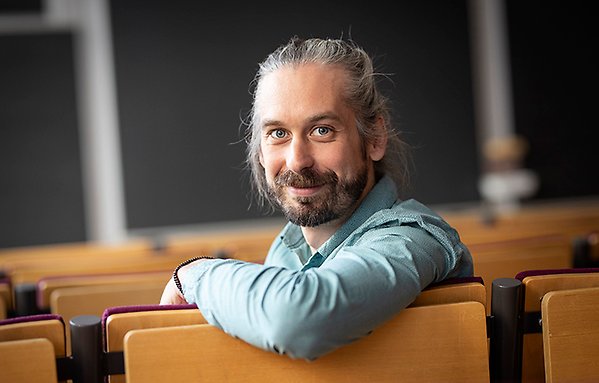Georgios Dimitroglou Rizell tells about his research in topology

Georgios Dimitroglou Rizell. Photo: Mikael Wallerstedt.
Georgios Dimitroglou Rizell received his undergraduate and doctoral degrees in Uppsala. His dissertation, which was completed in 2012, is entitled Surgeries on Legendrian Submanifolds and deals with a special type of geometric operation in space that is studied in symplectic geometry.
“In my dissertation, I studied surgeries where you first cut out a part of a geometric space and then insert something new in the resulting hole. This construction is a way of deforming the space, and in my dissertation, I studied different aspects of what changes during this type of operation.”
While writing his thesis, Georgios also worked with other techniques in symplectic geometry, but technical difficulties stopped his progress. A few years after his dissertation, he was able to return to these and understand what was missing, which led to several successful findings.
“Within symplectic topology, we study Lagrangian tori. My research colleagues and I succeeded in showing that these cannot be knotted in the fourdimensional space, which was in line with what we had expected but which had not previously been possible to demonstrate with a proof.”
As a topologist, Georgios studies geometry of multidimensional objects, from four dimensions and up.
“Mathematics is interested in classifying objects within the field being studied. As a topologist, you want to find and understand all of the different geometric spaces; it is a way of cataloguing.”
The research has provided Georgios with a large international network of contacts.
“In my research, I communicate with other topologists, where we explore the mathematical landscape together. This means a lot of travel and many contacts med other mathematicians. At the moment, we are developing new theoretical tools, called invariants, used to make measurements to differentiate different symplectic spaces.”
Georgios has many interests beyond geometry, including playing the guitar and the bouzouki, a Greek string instrument. Programming and physics have also captured his attention.
“If I had not gotten caught up in mathematics, I would probably have worked with programming. It was by chance that I became interested in symplectic geometry, but I like geometry and it seems natural for me to attack problems visually.”
Knot theory and Lagrangian tori
Knot theory studies in homany different ways an object can be included in a space, a question studied in the field of topology/geometry. The classical question concerns the study of usual one-dimensional knots in three-dimensional space. These are the kinds of knots we see in our daily lives, when we tie our shoes or try to undo a necklace that is tangled. But you can also study how surfaces can be knotted in higher dimensional spaces.
One interesting research field within symplectic topology/geometry is Lagrangian tori. These are surfaces that exist in four dimensions, with the condition that complex multiplication takes the tangent plane of the surface to its normal plane and vice versa.
